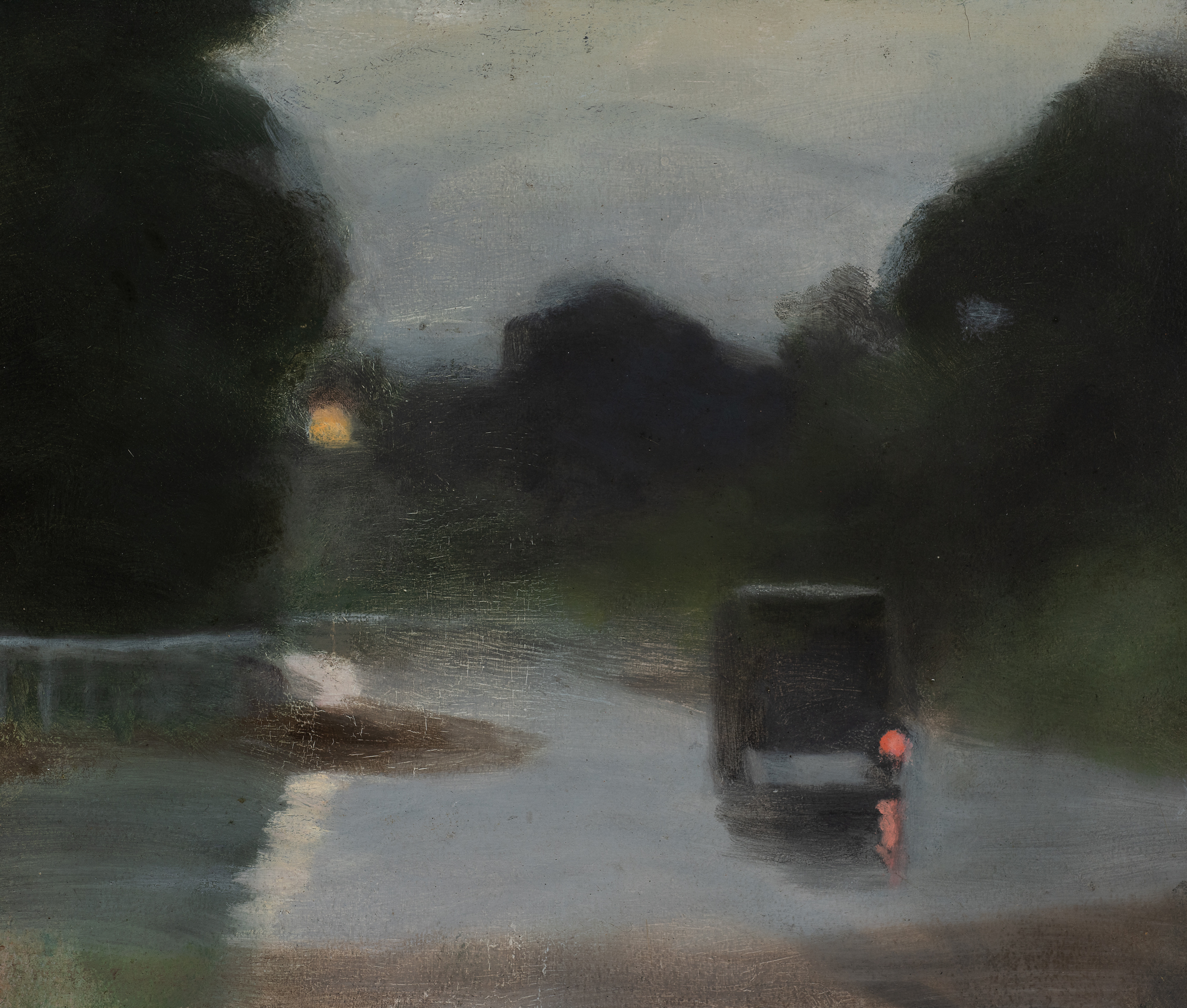Brack on Beckett
In this elegant and playful reflection, Clara Brack touches on looking at and writing about art, about colour and the serendipity of being drawn to a particular artwork. Clarice Beckett's Wet Evening was also the subject of our first Reflection, written by art historian Helen McDonald.

I was considering what painting in the Castlemaine Art Museum to write about when I heard of the death of the American writer Janet Malcolm. Janet Malcolm wrote an essay based on a series of interviews with an artist — she had made several false starts and then, feeling stuck and not knowing where to take the writing, she solved the problem by writing the essay as 41 False Starts: Essays on Artists and Writers. Some of the false starts were “real” and some were “false false starts”. She had solved the problem of writing in the way that artists are known to solve the problem of a painting, turning the problem into a feature of the work.
She describes how the artist had discussed a collage he had made and intended putting into a painting. Having established a rapport with the artist, she found sufficient gumption to bring one of her own “amateur” collages to show him, realising later that she was seeking his praise or affirmation. In a YouTube interview made available after her death, she tells us that the artist had suggested that she put more black into her collages. She subsequently discovered that the addition of the black was a significant improvement.
Rightly or wrongly, I assumed that the artist’s suggestion to put in more black had something to do with gender. As I looked through the online collection of the Castlemaine Art Museum, I found myself seeking a work by a woman artist who was not afraid of black, as if black was something to be feared. It was then that I came across Clarice Beckett’s Wet Evening. I realised that what I had initially seen as black was most likely very, very dark green, the green of the trees in the wet evening.
What does black “do” in a painting? In this painting the black — or the very, very dark green — represents the darkness of night, but black can also represent death, depression, melancholy. It can represent the mystery of the unknown. It can represent something hidden. Black can convey a sort of glamour. We project our own meaning into the black. The darkness of Wet Evening conveys the mystery of the evening, the beauty of it, the unknown of another era and yet the similarity to our own.
Although I have selected this painting to write about, I resist writing about it. I am not looking at the painting in the flesh, I am looking at it on the computer screen. A painting in the flesh has an aura lacking in the image on the screen. It is like the difference between seeing the real thing and a cardboard cut-out. The image is devoid of life on the screen.
However, when I visit the Castlemaine Art Museum it is likely that I will not select Wet Evening to write about. Often when we visit an art gallery to see a painting, it is another painting — or even a sculpture — that surprises us, something we had not gone to see but which invites us to look, which beckons us, which asks to be noticed and given our attention.
Clara Brack
July 2021